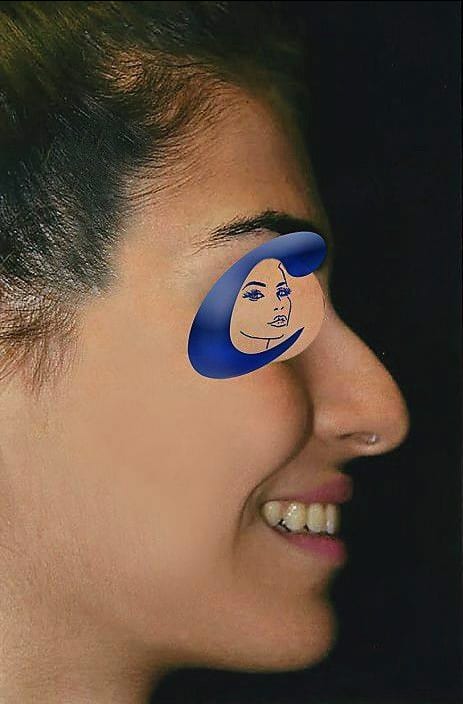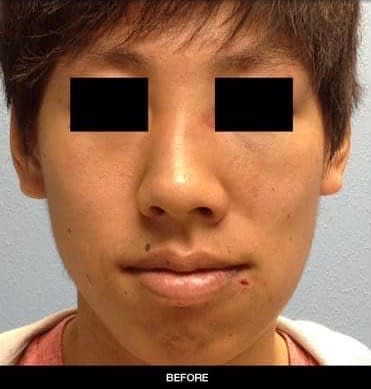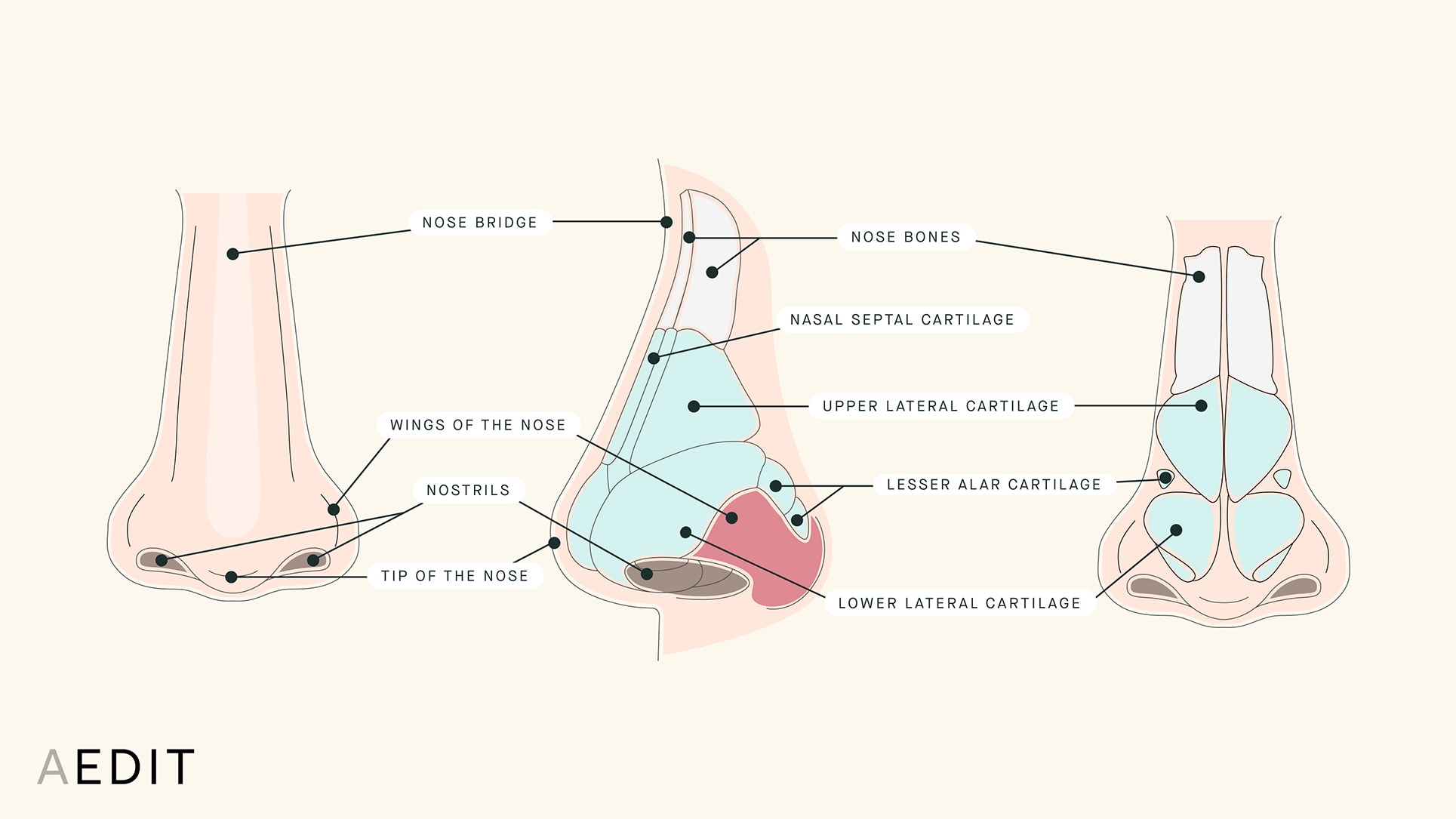
The Skinny
The size of the nose plays a big role in the overall proportion of the face, and noses that appear too large or too small and nostrils that are wide, narrow, or asymmetrical may lead to aesthetic concerns (learn more in our complete guide to Nose Size Concerns). Fortunately, there are a number of surgical and non-surgical procedures that can augment or reduce the size of the nose and/or nostrils.
Rhinoplasty (a.k.a. nose job) is the most common solution to adjust the size of the nose, and, according to the American Society of Plastic Surgeons (ASPS) 2018 Plastic Surgery Statistics Report, it was one of the most common cosmetic surgery procedures performed in the United States. Additionally, an alarplasty can be done alone or in conjunction with a rhinoplasty procedure to correct the size of the nostrils. Both procedures are performed on an out-patient basis by a board certified plastic surgeon and, depending on the technique, come with different levels of permanence, invasiveness, and recovery.
AEDIT
Before & After Images by Provider












Before & After Images by Provider
Nose Augmentation & Nose Reduction Solutions
The Specifics
Who needs to augment or reduce the size of their nose
Invasive and non-invasive nose augmentation or nose reduction procedures are ideal options for patients who wish to change the structure of the nose as a way to enhance or balance out their other facial features for cosmetic reasons. It has also been shown that rhinoplasty surgeries lead to increased confidence and decreases in anxiety, depression, and obsessive compulsive disorder.The Anatomy of the Nose

Common concerns related to nose size include large and small nasal areas and nostrils (read our full guide to nose size concerns). While noses generally average 2 to 2.2 inches long in women and men respectively, there is not a standardized medical measurement for the length or overall area of the nose. Additionally, the angle between the lips and nose should be between 95 and 105 degrees in women and 90 to 95 degrees in men. The angle between the tip of the nose and the base of the forehead, meanwhile, should be between 115 and 125 degrees.
The size of the nose may also be impacted by the size of the nostrils. Nostrils that are too large, too small, or asymmetrical can impact both the appearance and, in some cases, function of the nose.
What can you expect from nose augmentation and reduction procedures?
Expectations of results and recovery should be geared toward the specific procedure being considered. While minimally invasive, non-surgical rhinoplasties have hardly any downtime and temporary results, a surgical rhinoplasty might take up to a year to fully heal but the results are permanent. To better understand the healing and downtime associated with the procedure, check out our complete guide to rhinoplasty recovery.
There are two main categories of surgical rhinoplasties — open and closed — that differ in their techniques and scope.
Regardless of which technique a patient chooses, recovery is also impacted by general anesthesia versus local anesthesia. In more invasive procedures an external splint is used for the first week and then removed. Patients can also expect bruising and numbness with a few weeks of downtime and limitations on strenuous activities. In non-surgical rhinoplasty, patients will likely be able to resume activity on the same day.
When should you consider a nose augmentation or reduction procedure?
A candidate should seek consultation with a certified plastic surgeon once they have determined they are ready to proceed with creating their ideal appearance. Good candidates should consider overall health, side effects, and downtime and recovery time as possible mitigating factors.
For patients under the age of 18 who are interested in a rhinoplasty procedure, surgery should not be performed until the face has finished developing. Girls’ noses generally aren’t considered fully formed until one year after menses (around 15 years old), while boys are usually considered fully grown one year after their last noted growth spurt (around 18 years old).
Why should you consider nose augmentation or reduction?
As with any cosmetic procedure, the choice to pursue available options is a personal one. If the size of the nose, as a result of genetics or trauma (think: a broken nose), is interfering with a patient's self confidence, it may be time to consider meeting with a board certified plastic surgeon to discuss possible treatment options to refine the appearance of the nose.
Surgical Nose Augmentation & Reduction Procedures
We all know about the so-called ‘nose job.’ Turns out, there are a number of different rhinoplasty techniques depending on the state of the nose and aesthetic goals of the patient.
Non-Surgical Nose Augmentation & Reduction Procedures
Less invasive but also less permanent, dermal fillers, neurotoxins, and even makeup can be used to refine an angular or crooked nose.





